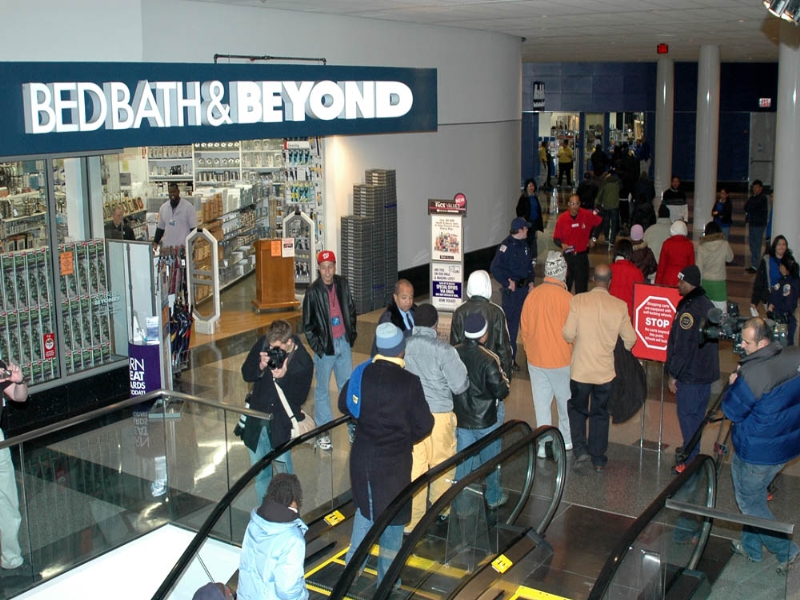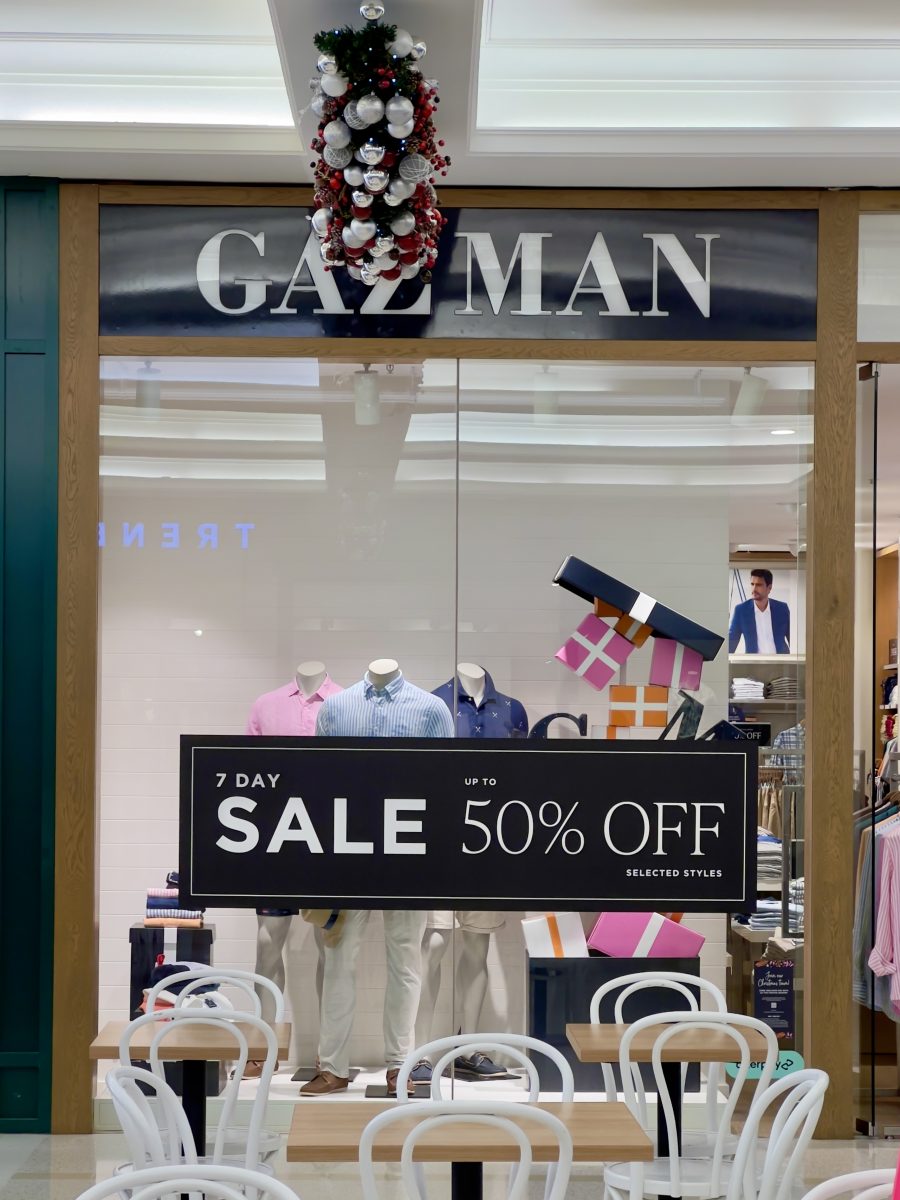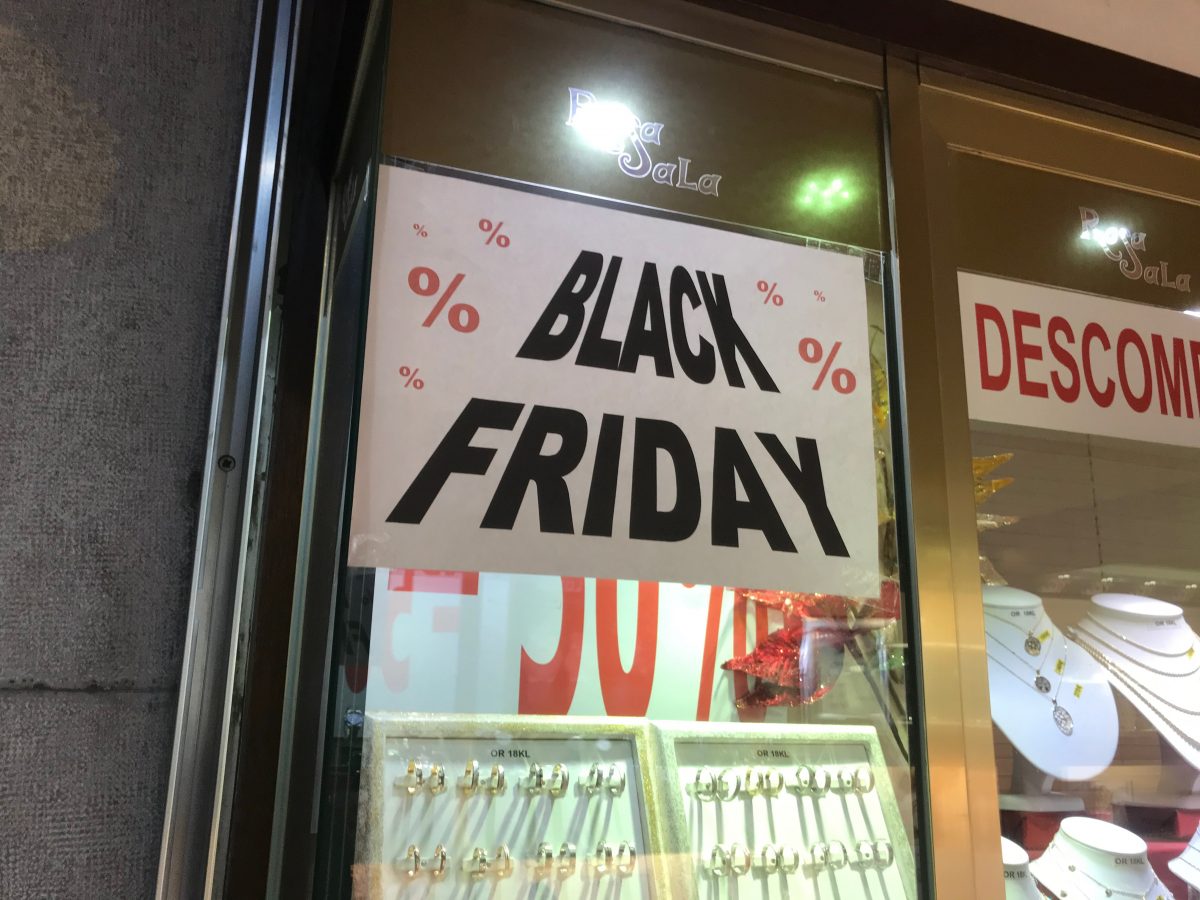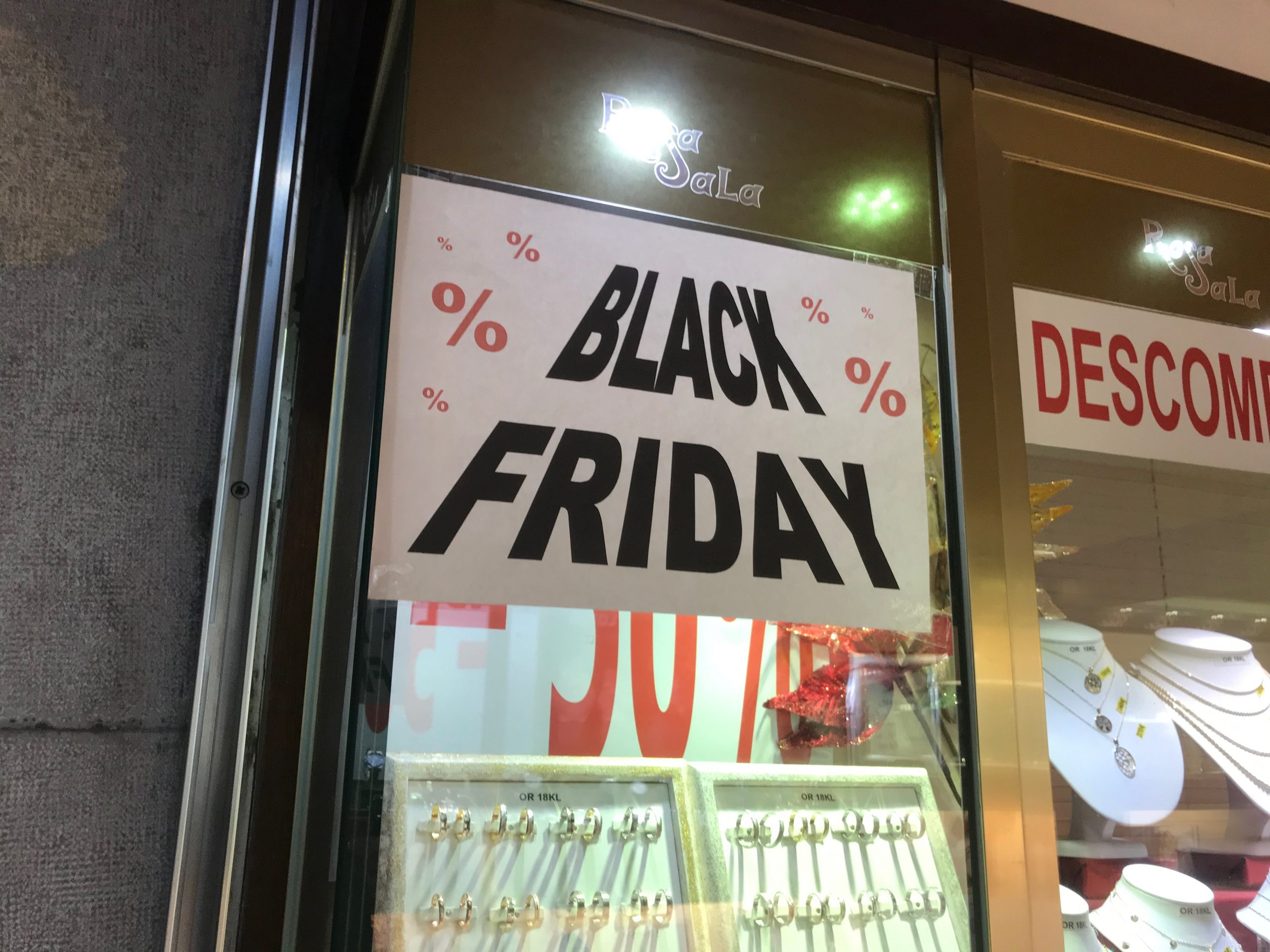By David Lavrinovich, Editor and Anonymous Contributor
With Thanksgiving coming up, Black Friday follows shortly thereafter, a day in which many people go out to buy large amounts of Christmas presents or other items for themselves while being justified by the outstanding sales they see. This is also a day where retail workers are pushed to the extreme in order for the stores to benefit from consumers. They are made to work harder for longer hours, all while the pay is not reflective of the amount of extra labor they have to do. Shoppers aren’t always aware of all the work that needs to be done in order for their Black Friday experience to be what it is. Between working late Thanksgiving nights and underpayment of employees, Black Friday can be a nightmare for retail workers in America’s favorite stores.
Black Friday Past
There’s no doubt that Black Friday used to be a much bigger deal. It was a major event in which people not only strived to get their Christmas shopping done, but also acquired brand-new and luxury commodities that may have otherwise been unaffordable, as people would literally camp out in front of stores to get products at major discounts. When the doors finally opened, all hell would break loose, with consumers fighting over extremely cheap goods like a modern-day gladiator ring.

The same can’t be said about Black Friday in the past few years, where it seems that the discounts are nearly nonexistent. What happens more often now is, in the period leading up to Black Friday, many companies will raise the prices of their products before putting them “on sale” for the same price they were originally. Black Friday of this year is much the same, with the magic of extraordinarily low-priced merchandise largely gone. Part of this can be attributed to one event that massively reshaped the global economy: the COVID pandemic.
COVID’s Impact
COVID-19 forced most stores to shut down in order to follow the lockdown rules at the time and, with nowhere to go, consumers started purchasing online. When certain restrictions were lifted, stores slowly began to open up again once mask mandates and social distancing were put in place to try and prevent the virus from spreading. Some stores still have stickers on the floor which tell customers where to stand so they wouldn’t be too close to one another in checkout lines.
Social distancing regulations also forced the stores to limit the amount of people who could enter the store at a time. Even after these restrictions were lifted, the situation wasn’t the same as before once people got used to shopping from the comfort of their own homes.
The Rise of Online Shopping
Many people benefit from the accessibility of online shopping, including the elderly, parents, and people with disabilities; grocery pickup is one of those invaluable services that came from the growth of online shopping. This convenience has also spread to Black Friday.

Shopping online for Black Friday deals seems amazing on the surface. There’s no camping out before sunrise or fist-fighting someone for the last item on the shelf. Still, that convenience comes at a cost; notably, the amount of cardboard and plastic waste generated in order to protect items when being delivered. On top of that, there is the amount of labor necessary to maintain the level of convenience for the consumers.
For the customer, online shopping is simply a matter of clicking a few buttons without really thinking where it comes from. However, many retail employees are maintaining a complicated system to fulfill customers’ orders. This is already difficult for those who work out of a storage warehouse, but store employees must also fulfill the same tasks on top of having to deal with customers, which is a particular challenge on Black Friday.
The Customer isn’t Always Right
If there is one major attitude retail workers have to deal with, it’s this: the customer is always right. Even if it’s frequently untrue, it’s a motto most retail stores follow in order to keep the attitudes and experiences for customers positive. This idea has caused retail workers to be taken advantage of in terms of discounts and sale items; for example, if the smallest thread on a sweater is loose, the entire item can be seen as damaged, even if there is no effect on the sweater’s quality. In order to make sure the customers are satisfied, these perfectly fine items will often be marked down as damaged.
As clothing stores have stacks of their items on tables or rows of hangars on racks throughout the sales floor, retail workers must stay alert to make sure the floor remains tidy and organized. When a customer is seen digging through these piles, throwing clothes on other stacks, placing items where they don’t belong, or even leaving the stack a mess, it’s important for retail workers to make everyone’s lives easier and ask if the customer needs help. When this help is denied, things become more difficult because it means the retail worker has to go in and refold the entire stack or hang clothes back up so it all stays presentable. Fitting rooms are also usually left a mess after a customer has gone inside. Please remember: retail workers are there to help you, not clean up after you.
Effect on Retail Workers
The weeks leading up to Black Friday fill every retail worker with dread. It is easily one of the busiest days of the year and is just the beginning of the even more frantic holiday season. Most professions will give bonuses when employees are scheduled to work on holidays; however, this is not the case for many retail workers on Black Friday. All this additional labor, yet most retail employees will not receive any extra holiday pay for the additional workload. This is especially unfair because Black Friday, as a holiday, primarily affects retail workers, whose labor enables these store events to take place.
Even beyond financial concerns, Black Friday also impacts workers’ physical and mental health. With all of the extra products being brought into stores, there is even less space for people to move around safely, which has the potential to lead to severe accidents. Furthermore, to meet quotas and deadlines, retail workers are put under a lot of physical stress. Not only does this stress put a lot of strain on the body, but it also has adverse effects on the mind; many retail workers can attest to the burnout and fatigue that occurs around this time. Even worse is that in many stores and businesses, this is seen as an inevitability of the job instead of being accounted for to help protect the workers who make Black Friday happen.
Overconsumption and the Marketing of Sales and Discounts
In this day and age, overconsumption has reached a new height in the United States. Everyone needs the latest iPhone, the new Stanley color, even that expensive polyester hoodie everyone is wearing. Black Friday’s sales, while not how they used to be, still greatly influence consumer’s minds into thinking they are getting a good deal. If those sweaters are “buy one, get one half off,” they absolutely will get one extra sweater to get the deal honored, even if they had no intention of getting the extra item. Clothing stores especially use the tactic of pushing Buy One-Get One (BOGO) sales in order to get customers to purchase more.

In stores such as Altar’d State, retail workers are supposed to make sure everyone who steps into their store knows the new sales of the week to encourage customers to look for more items, thinking they are getting a good deal. Instead of buying one sweater they need, buying two will save them more money – but stores like these already have their items priced higher than stores who typically don’t push these sales.
With these higher prices, consumers aren’t saving the money they think they are saving. A sweater at these boutique-style stores range around $50-$70, depending on the style. What doesn’t go into the price is the quality of the fabric; unfortunately, looking at the inside tag of most of the Altar’d State clothes will reveal that every item is made almost entirely of polyester. It’s a cheap material to make clothes out of, yet the price of the sweaters is raised in order to keep customers buying into the idea they’re wearing luxury, high fashion pieces. These days, polyester is a top material in clothing stores, but when the prices tend to be higher than they should be, consumers believe they are getting a top-quality item.
Clothing at stores like these are consistently marked down over the weeks. Some pieces will be on the main sales floor for only a month before they are moved to the Sales Room, where clothing items are discounted all the way down to $4 at times, with the original price being ten times that. A good portion of Altar’d State’s money comes from their Sale Room as people will purchase large amounts of their clothes, thinking they are getting a good deal. Price-wise, the deals are better than most stores with a clearance section, but low quality items like these are often torn up in the wash or get ruined over time. The quality of the clothing does not make the regular price of these items worth buying but, once they’re discounted, customers can go and buy the majority of the clothes they wanted before at a bargain price.

The majority of clothing stores allow returns from in-store and online purchases. Returns are done everyday in Altar’d State and the prices of the items can get as high as $600. Most of these high returns were online purchases, which customers may not know were packaged and sent off by employees. Sometimes employees have over 100 orders to find, package, and ship; these Ship From Store (SFS) items are typically wrapped individually by plastic wrap, paper, and usually a plastic bag or box depending on the items. As these SFS returns typically have four items or more, the process of packing them, shipping them, then having them returned, is part of the 70% of CO2 emission overconsumption causes according to the The Intergovernmental Panel on Climate Change.
Black Friday Future
This Black Friday, you can make things easier both for yourself and retail workers by practicing mindfulness. If you pick something up but decide against it, try to put it back where and how you found it, or give it to the front desk or an employee. The same goes for clothes you try on in a dressing room. Treat all employees with kindness, as they are already under so much stress from their employers and the seasonal workload.
Lastly, try to avoid huge hauls. Not only does this mean that your purchase won’t produce as much waste and CO2 emissions, but it will also be a lighter workload for retail workers. Most importantly, you are saving yourself some trouble and avoiding the exploitative practices applied by retailers. By following these guidelines, you can help retail workers, the planet, and your wallet, all while having a happy Black Friday shopping experience!






